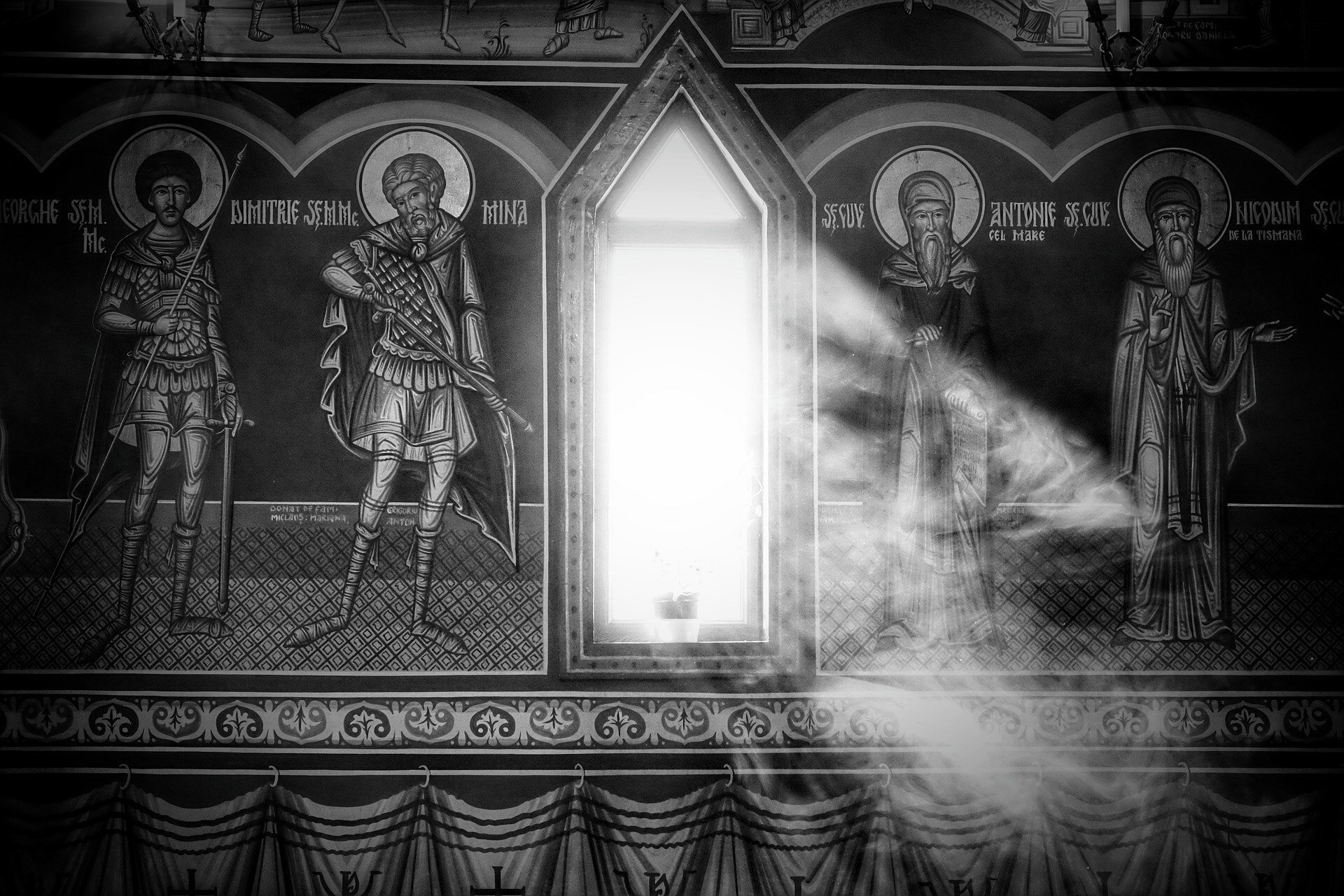The Poetry of Limits
We are created in the image of God. In other words, we are created in the image of the Creator, which means we, too, are creators. We are creative in the obvious but profound sense that we also make creatures in our image—sometimes called children. We are also creative in that we build things, we design, we make tools, we cook, we sew, we solve problems, we rescue order from chaos.But we also indulge in another form of creation, of creativity: we make something called art. Just as God’s creation is a reflection of his glory, something that he made and looked at and said was good, so our creative acts are a reflection of our glory and—stay with me now—since they are a reflection of our glory as creatures made in the image of God, they are a reflection of God’s glory as well. That is why truly great works of art are ultimately religious, no matter what their immediate subject matter. Great art glorifies God. All art acknowledges the Creator simply by acknowledging the created order. If it doesn’t do that, it just adds to the chaos and cannot properly be called art.When we are close to God, our art is full of God. It overflows. It is always new. It survives the ages. It has a universal appeal. When we are far from God, our art is empty, empty of God and of everything else as well. It might burn brightly for a moment, but it fades quickly. And all the king’s art critics and all the king’s men cannot put it together again. Most art forms, painting, sculpture, music, even drama, have developed within the context of religion. As Walker Percy said, “Art is the handmaiden of religion.” The one obvious exception is the relatively recent art form that seems to combine all other art forms: Cinema. The Motion Picture had its beginning and its development completely outside of the Church. It is an art form that was designed primarily as a means of passive entertainment. It has produced art that is mostly mindless and meaningless, but sometimes worse: sometimes purposefully bad. Some movies do active damage to the soul.So, cinema has been exception to art in that it generally has not been religious. But of course there are exceptions to this exception, the most obvious being the movie The Passion of the Christ. If you have seen this film, (and I suspect that by now you have), and if you are Catholic, you probably realize that you have seen a cinematic version of the Stations of the Cross and the Sorrowful Mysteries of the Rosary. If you are a non-Catholic Christian, you are probably not put off by these Catholic elements because the film is so clearly focused on the centerpiece of Christian belief, which is the Cross and the Sacrifice of Christ. Still, if you are not Catholic, and especially if you are not Christian, there are probably elements in the film that have the same effect on you as the Stations of the Cross or the Rosary. You may be intrigued by them, or puzzled by them or you even repulsed by them. But these are precisely the things that have been portrayed in Catholic art from across the centuries, whether in painting or in sculpture or in song, the things that Catholics have meditated on and that have been essential to their devotional life. Walk through any major art museum and you’ll see the same images. But now you have seen them portrayed in the most vivid art form ever known. And the entire movie industry seems to be helpless before it. So has the secular press. It was easy to ignore bloody images of Christ in empty art museums, but when they trespassed into the movie theaters, the dominant media attacked this film as it has attacked few others. Their attacks, however, have been rebuffed by the millions of people who have flocked to see the movie.So there is hope even for the movies. Only the Church can redeem this art form as it has redeemed all the others.While film is, as I said, the most vivid art form, combining both the plastic and the performing arts, it also calls on the one art that is greater than itself, and greater than all the arts. The written word. The literary artist paints his pictures with just words. He carves his statues with just words. He makes words sing. He makes words dance. He calls creatures out of the abyss with just words. The writer uses just words, the most difficult, the most imprecise medium of all. Words. And yet more can be done with words than with any other medium, because words are the incantation that activates our imagination. The literary artist creates images in our minds that cannot be painted or sculpted or filmed. A good book may make a good movie, but the book is always better than the movie.The reason that the literary arts are perhaps under-appreciated is that most of us can write, but very few paint, draw, sculpt, dance, or compose a symphony. But pictures and music are actually more simple and basic than words. We have to force the most complex ideas and subtle emotions into words, and most of us aren’t very good at it. In spite of an ocean of words, it is rare to find clarity of thought matched by clarity of expression. It is one thing to have a good idea—I’m sure we’ve all had thousands of them—but to be able to actually convey a good idea, that is a talent that precious few of us have. G.K. Chesterton said art is successful only when one mind communicates with another mind. When that happens, when the artist has expressed a great idea, it is marvelous in our eyes. But it is sometimes even more penetrating when the artist gives us the pleasing shock of familiarity, when he conveys to us our own idea—when we recognize it as something we know but that we have never been able to say.Art is about articulation. Chesterton says, “All things begin in the mind.” If you think about it, our minds are places of chaos. We are always trying to bring order to them, and to make sure that the chaos does not get the upper hand. It is an ongoing theme throughout Chesterton’s writings that sanity is hard work. It’s complex. It’s beautiful. Like a Gothic Cathedral. Insanity is as easy as falling. It is simplistic and ugly and requires no talent. In other words, it looks like modern art. Chaos has definitely gotten the upper hand in modern art.Chesterton says that imagination is the mightiest of pleasures. We can, of course, do anything with our imagination. It is infinite. But as Chesterton says, there are an infinite number of angles at which one falls, but only one at which one stands. There are an infinite number of ways to miss a target, but hitting the target is the rare thing, and the most poetic and romantic thing. When Chesterton published his first novel, The Napoleon of Notting Hill, Arthur Ransome reviewed it and said that Chesterton had done what few writers had ever dared to do: he got on top of his imagination and rode it. Chesterton called his next novel, The Man Who Was Thursday, a Nightmare. But he said, “I will ride the nightmare, it will not ride me.” In other words, imagination is this wild and beautiful thing, but it can be tamed, and it must be tamed. It must obey us. And if we don’t tame it, it simply runs away from us. And so Chesterton argues that the decadence in art is not a mark of imagination; but of the loss of imagination.An image is a thing with limits. It has an outline. Nature has no outlines. Outlines are a device of the artist. Chesterton says, “Art, like morality, consists of drawing the line somewhere.” He goes even further. He says “The essence of every picture is the frame.” Even a landscape looks better when it is scene through a window.“Imagination,” he says, “is a thing of clear images, and the more a thing becomes vague the less imaginative it is. Similarly, the more a thing becomes wild and lawless the less imaginative it is.”Limits are rules. The paradox is that freedom exists only within the rules. If we break the rules, we don’t get freedom. Consider modern poetry: we have broken all the rules of poetry and we call it “free verse.” And now we have poems that cannot be recognized as poems. No one reads them, no one memorizes them, no one enjoys them. Poetry ran away from us. Chesterton, a magnificent poet, kept rhyme and meter and alliteration when the rest of the literary world was in a mad rush to cast them off. The modern poets considered their new form progressive. But the new form was not a form at all. “Free verse” is not a new form of meter “any more than sleeping in a ditch is a new school of architecture.”The purpose of poetry is “to make language go on all fours.” You make language do what you want it to, but you do it with discipline, by staying within the rules. Chesterton says rhyme is something basic to us, we learn it in the nursery. Rhyme is a kind of home-coming, it provides a sense of fulfillment and completeness. Chesterton says if we were “real” enough, we would all talk in rhyme. But we are moving in an opposite direction, away from reality, towards a vagueness and babbling incoherency. The innovations have not improved poetry.For contrast, consider Chesterton’s poetic masterpiece, “Lepanto.” It is a perfect poem. His meter marches like soldiers into battle. His rhymes ring like four-part harmony. His alliteration bounces like pearls on a glass tabletop. In spite of being saddled with such a stringent form, he manages to tell a story, a multi-layered story. He even gets the theology right. And he rouses the emotions. The poem was shouted by soldiers in the trenches during World War I. If we bothered reading it, it would inspire us even now.What he accomplishes with “Lepanto” on a small scale, he accomplishes on a grand scale with his Ballad of the White Horse. It is the last great epic poem of the English language. Ironically, the very title points highlights the theme about preserving form, in this case the ancient and honorable outline of a white horse in the Wessex hills. It is hard work to preserve order and easy work to let the weeds grow over it and watch tradition disappear. Chesterton’s poem keeps the past present. It will be appreciated across the ages, even if now it is appreciate by only a few...
Across these days like deserts, whenPride and a little scratching penHave dried and split the hearts of men.

